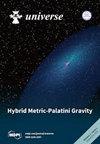A Comprehensive Study on the Mid-Infrared Variability of Blazars
IF 2.5
4区 物理与天体物理
Q2 ASTRONOMY & ASTROPHYSICS
引用次数: 0
Abstract
We present a comprehensive investigation of mid-infrared (MIR) flux variability at 3.4 μm (W1 band) for a large sample of 3816 blazars, using Wide-field Infrared Survey Explorer (WISE) data through December 2022. The sample consists of 1740 flat-spectrum radio quasars (FSRQs), 1281 BL Lac objects (BL Lacs), and 795 blazars of uncertain type (BCUs). Considering Fermi Large Area Telescope detection, we classify 2331 as Fermi blazars and 1485 as non-Fermi blazars. Additionally, based on synchrotron peak frequency, the sample includes 2264 low-synchrotron peaked (LSP), 512 intermediate-synchrotron peaked (ISP), and 655 high-synchrotron peaked (HSP) sources. We conduct a comparative analysis of short- and long-term intrinsic variability amplitude (σm), duty cycle (DC), and ensemble structure function (ESF) across blazar subclasses. The median short-term σm values were 0.181−0.106+0.153, 0.104−0.054+0.101, 0.135−0.076+0.154, 0.173−0.097+0.158, 0.177−0.100+0.156, 0.096−0.050+0.109, and 0.106−0.058+0.100 mag for FSRQs, BL Lacs, Fermi blazars, non-Fermi blazars, LSPs, ISPs, and HSPs, respectively. The median DC values were 71.03−22.48+14.17, 64.02−22.86+16.97, 68.96−25.52+15.66, 69.40−22.17+14.42, 71.24−21.36+14.25, 63.03−33.19+16.93, and 64.63−24.26+15.88 percent for the same subclasses. The median long-term σm values were 0.137−0.105+0.408, 0.171−0.132+0.206, 0.282−0.184+0.332, 0.071−0.062+0.143, 0.218−0.174+0.386, 0.173−0.132+0.208, and 0.101−0.077+0.161 mag for the same subclasses, respectively. Our results reveal significant differences in 3.4 μm flux variability among these subclasses. FSRQs (LSPs) exhibit larger σm and DC values compared to BL Lacs (ISPs and HSPs). Fermi blazars display higher long-term σm but lower short-term σm relative to non-Fermi blazars, while DC distributions between the two groups are similar. ESF analysis further confirms the greater variability of FSRQs, LSPs, and Fermi blazars across a wide range of time scales compared to BL Lacs, ISPs/HSPs, and non-Fermi blazars. These findings highlight a close correlation between MIR variability and blazar properties, providing valuable insights into the underlying physical mechanisms responsible for their emission.关于蓝星中红外变异性的综合研究
我们利用宽视场红外巡天探测器(WISE)截至 2022 年 12 月的数据,对 3816 个炽星大样本在 3.4 μm(W1 波段)的中红外(MIR)通量变异性进行了全面研究。样本包括 1740 个平谱射电类星体(FSRQs)、1281 个 BL Lac 天体(BL Lacs)和 795 个不确定类型的类星体(BCUs)。考虑到费米大面积望远镜的探测结果,我们将2331颗类星体归类为费米类星体,1485颗类星体归类为非费米类星体。此外,根据同步辐射峰频率,样本包括 2264 个低同步辐射峰源(LSP)、512 个中同步辐射峰源(ISP)和 655 个高同步辐射峰源(HSP)。我们对各类星体的短期和长期本征变率振幅(σm)、占空比(DC)和集合结构函数(ESF)进行了比较分析。短期 σm 的中值分别为 0.181-0.106+0.153、0.104-0.054+0.101、0.135-0.076+0.154、0.173-0.097+0.158、0.177-0.100+0.156,0.096-0.050+0.109,以及0.106-0.058+0.100 mag,分别用于FSRQs、BL Lacs、费米类星体、非费米类星体、LSPs、ISPs和HSPs。同一亚类的DC中值分别为71.03-22.48+14.17、64.02-22.86+16.97、68.96-25.52+15.66、69.40-22.17+14.42、71.24-21.36+14.25、63.03-33.19+16.93和64.63-24.26+15.88%。同一亚类的长期σm 中值分别为 0.137-0.105+0.408、0.171-0.132+0.206、0.282-0.184+0.332、0.071-0.062+0.143、0.218-0.174+0.386、0.173-0.132+0.208 和 0.101-0.077+0.161 兆。我们的研究结果表明,这些亚类在 3.4 μm 通量变异性方面存在明显差异。与 BL Lacs(ISPs 和 HSPs)相比,FSRQs(LSPs)表现出更大的σm 和 DC 值。与非费米星相比,费米星的长期σm较高,但短期σm较低,而两组之间的DC分布相似。ESF分析进一步证实,与BL Lacs、ISPs/HSPs和非费米星相比,FSRQs、LSPs和费米星在广泛的时间尺度上具有更大的可变性。这些发现凸显了近红外变率与类星体特性之间的密切联系,为我们深入了解类星体发射的基本物理机制提供了宝贵的信息。
本文章由计算机程序翻译,如有差异,请以英文原文为准。
求助全文
约1分钟内获得全文
求助全文
来源期刊

Universe
Physics and Astronomy-General Physics and Astronomy
CiteScore
4.30
自引率
17.20%
发文量
562
审稿时长
24.38 days
期刊介绍:
Universe (ISSN 2218-1997) is an international peer-reviewed open access journal focused on fundamental principles in physics. It publishes reviews, research papers, communications, conference reports and short notes. Our aim is to encourage scientists to publish their research results in as much detail as possible. There is no restriction on the length of the papers.
 求助内容:
求助内容: 应助结果提醒方式:
应助结果提醒方式:


